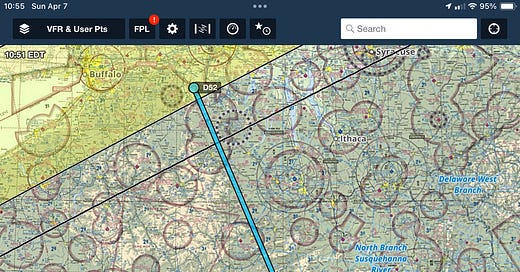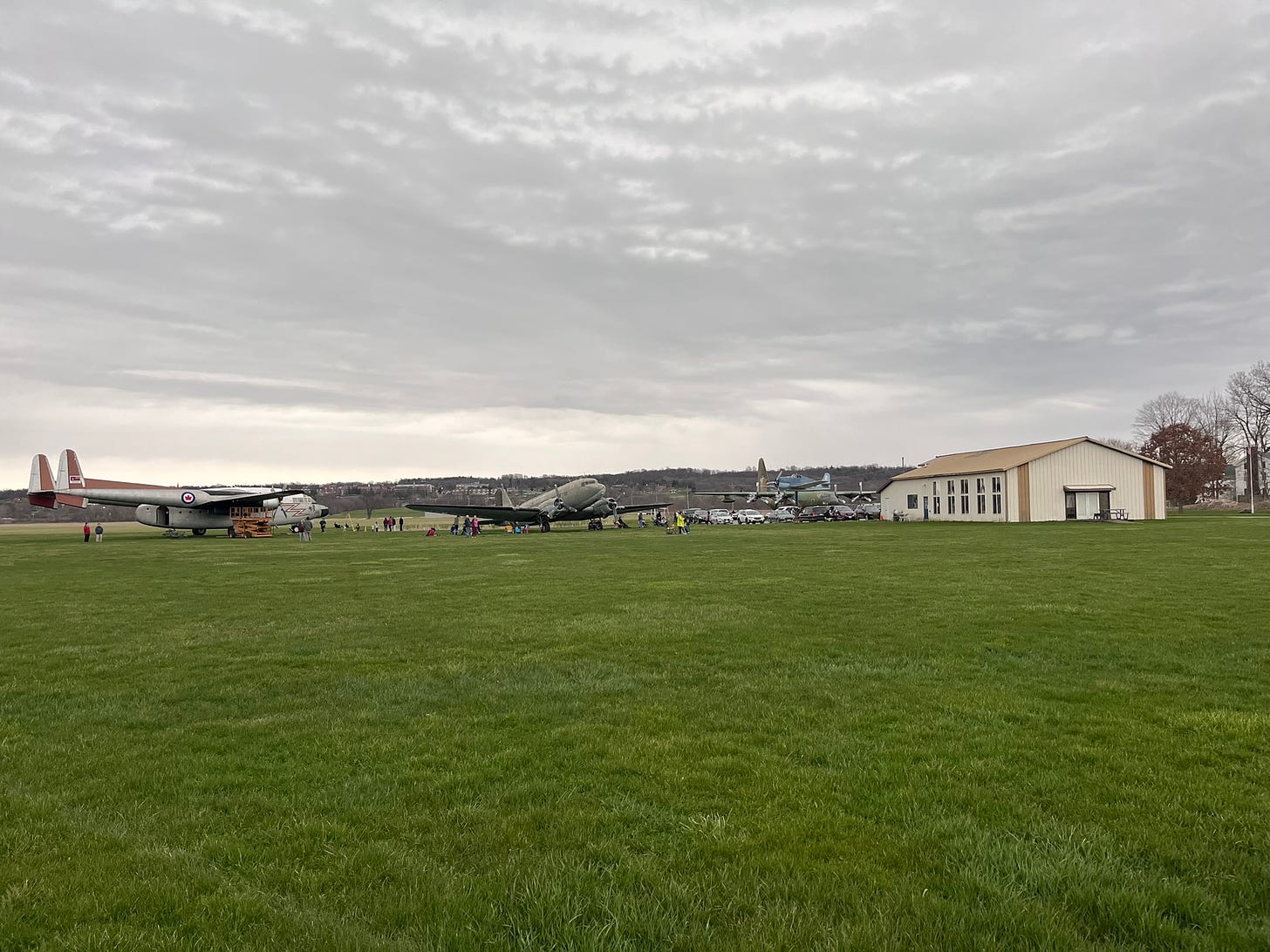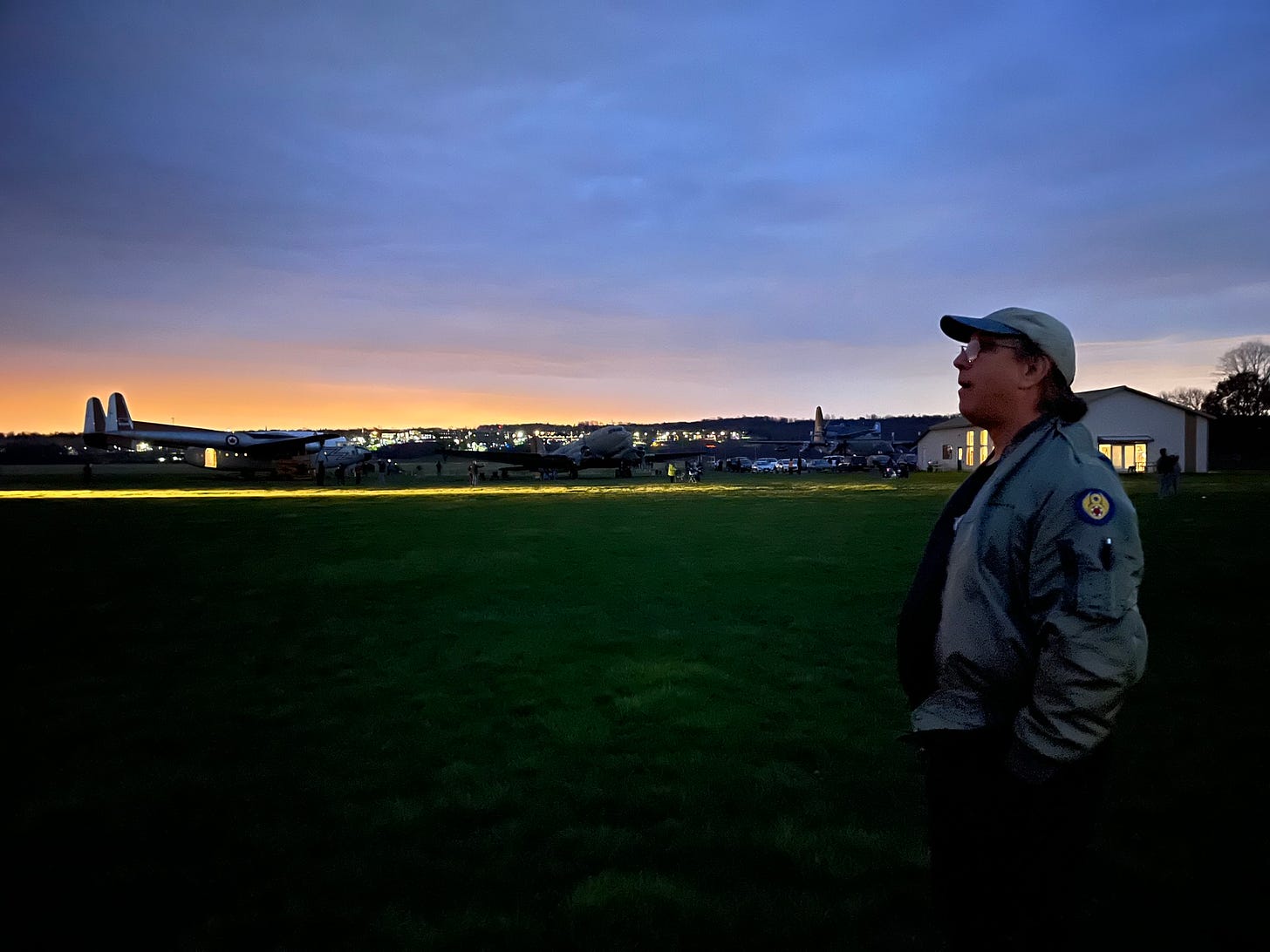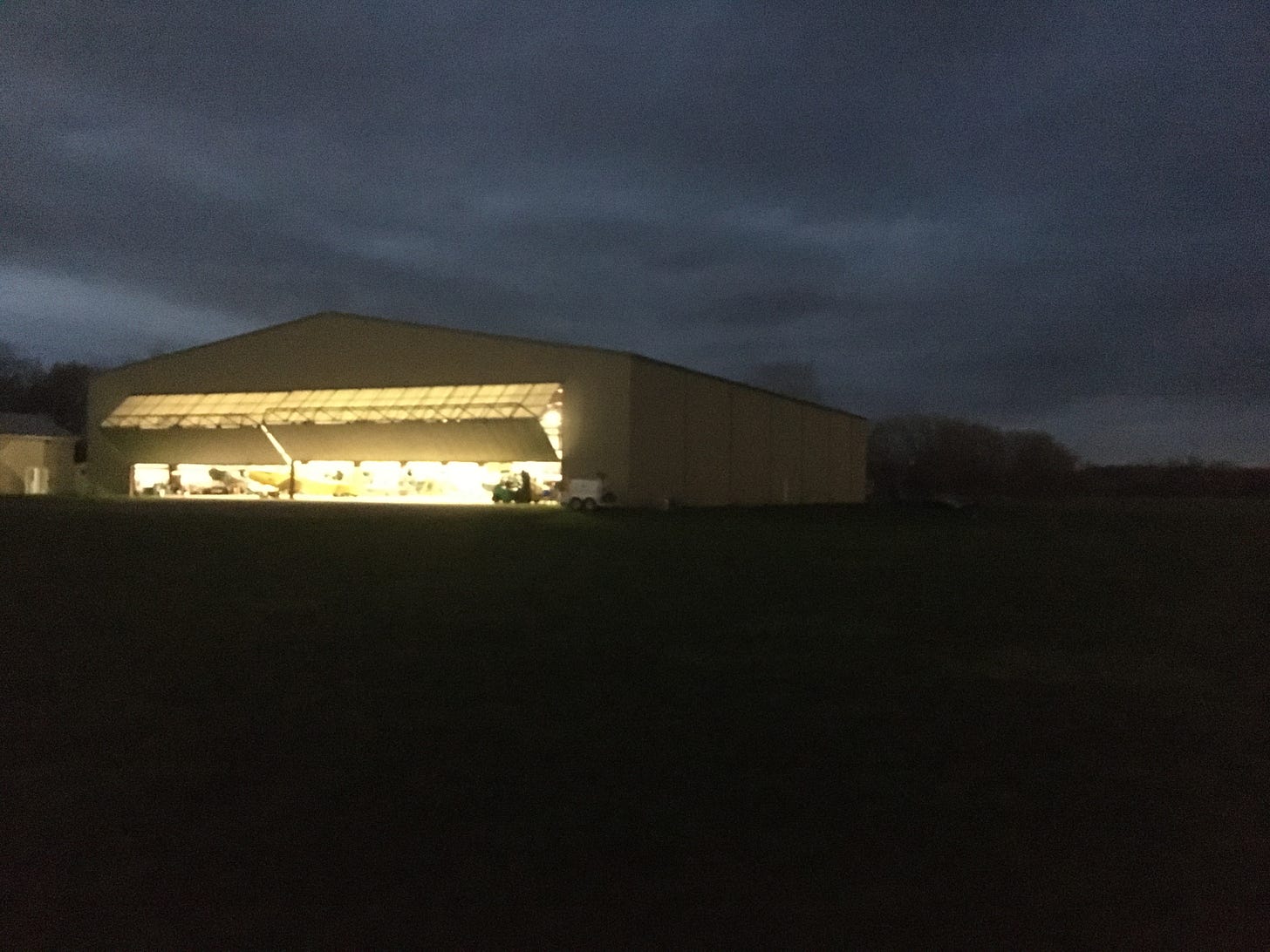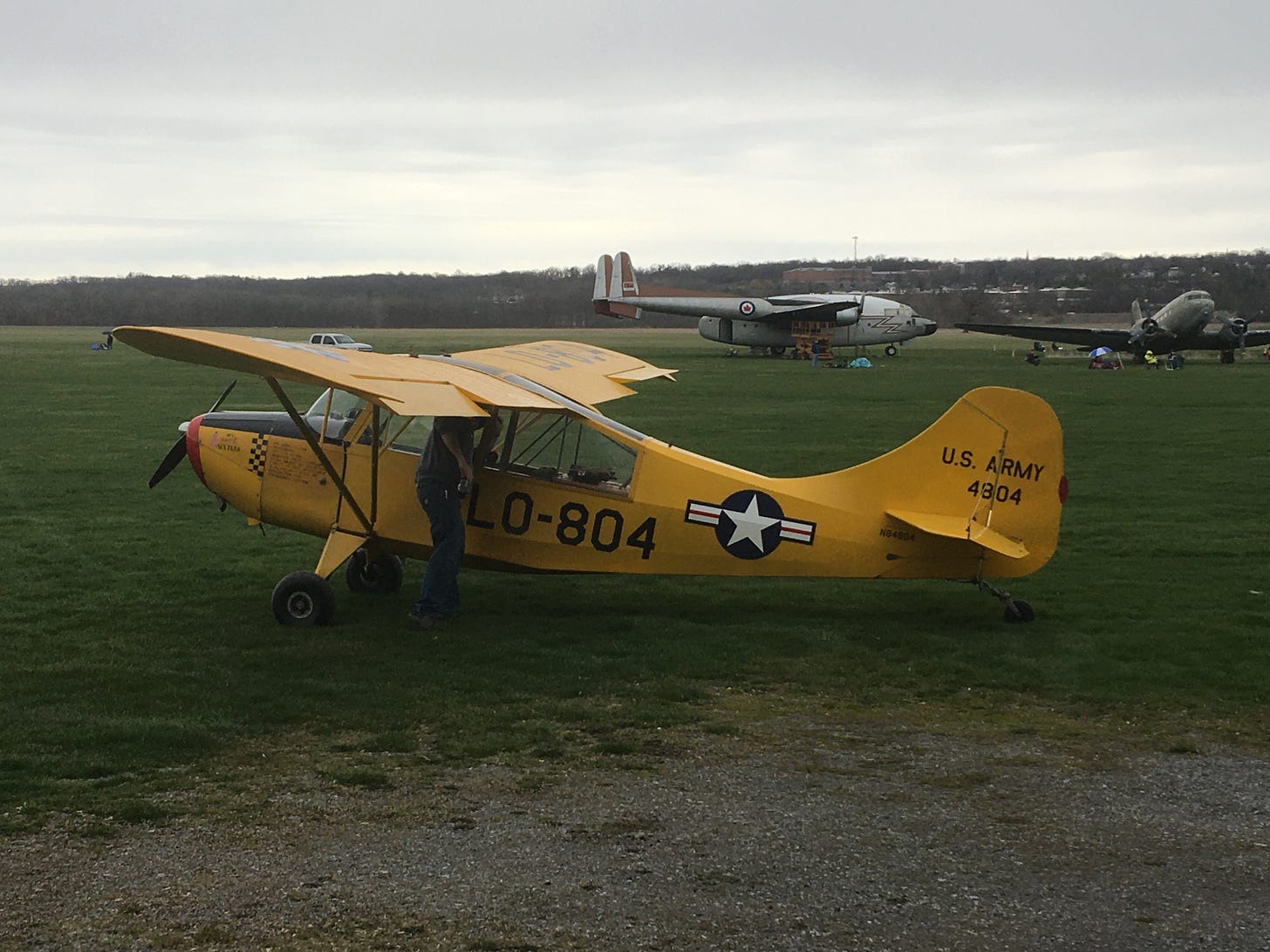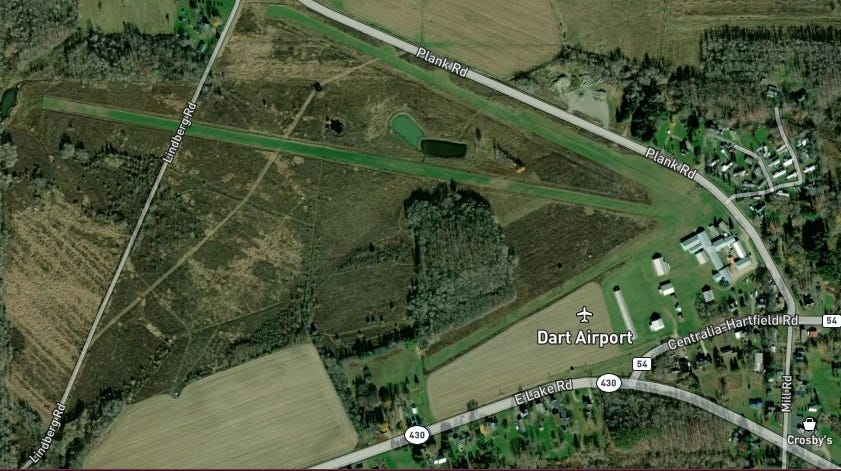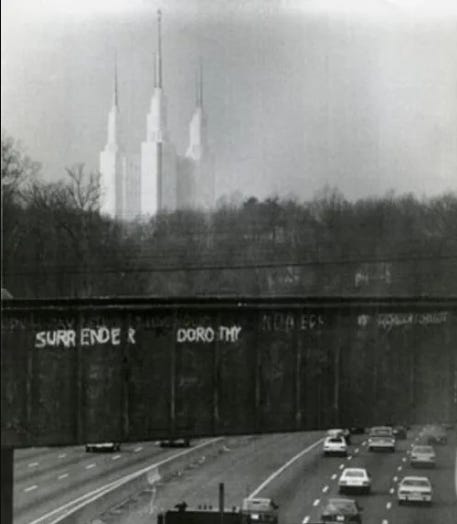My eclipse story is going to be a little different because…I didn’t actually see the eclipse. Even though I travelled 260 nm to a location inside the totality zone. It was, nonetheless, an adventure.
Our possible destinations were limited by two factors. We couldn’t stay overnight either way, and we had to wait to launch until this was over at 11:15 local:
That ugly red double bullseye over Wilmington is the exclusion zone (or as I call it, the cockpit block) that follows Uncle Joe wherever he goes. And every single &%$#ing week (often for four days) he’s either in Wilmington or at his beach house in Rehoboth. For near on four years now, our CIC has occupied the White House he so badly coveted less than 50% of the time; instead he makes life difficult to impossible for people in Maryland and Delaware who make their livings in aircraft. (Here’s a list of the things you can’t do in that 30 nm radius ring.)
But, we’re used to it and we had built it into our plans. We had at our disposal a plane that cruises around 110 kt. We picked our destination both because we could get there with time to get situated before totality, and because it was someplace fun even if there was no eclipse (since the sky condition forecasts were so pessimistic):
The National Warplane Museum; Geneseo NY.
You might be having a little trouble discerning where the runway is in this photo. We had the same problem. We had to do a couple of passes before we figured out that the slightly greener strip at top right was the threshold. But it was all cool; we touched down and saw at the far end of the patch a pickup truck with flashers motioning us to our parking spot. That was just the first of a dozen nice people welcoming us into their world.
We arrived around 14:15 local, an hour before peak totality. There were maybe thirty families there…almost certainly locals, who had come out to enjoy the great sightlines and the old airplanes. Lots of kids running around. It was sublime.
They opened up their restoration hangar, and let us potter around.
We toured their modest museum. There are many aviation museums like this, dotting the country. Not professional but honest and heartfelt. Chatting with one of the docents, we learned that their annual budget is $150,000. What they accomplish with that is beyond belief.
And then, it started getting dark. It wasn’t obvious at first, because there had been a solid cloud deck the entire time. But then it accelerated, and it became clear something extraordinary was happening.
I’d already witnessed one total eclipse, in South Carolina in 2017. I’d seen the disk, and the weird rippling light on the ground, and the bizarre shadows. I was prepared to be disappointed this time, because the clouds were in the way.
And I got to see something different, and unique. I got to see an eclipse without seeing the sun.
Shortly before the light was at its minimum, an Aeronca L-16 with no navigation lights took off, and flew around throughout the totality. I did not talk to the pilot, but I hope to God he did it to prove a point.
FAA regulations prohibit an aircraft from operating without position lights after sunset. Sunset is precisely defined as a measurement from the center of the solar disk to the horizon. Darkness as a result of a total solar eclipse would not meet that definition. If it was on purpose, it was a charming way of pulling the FAA’s Code of Federal Regulations nose. I’m sure it was also a purely delightful sight.
Afterwards we spent another hour bullshitting with folks in the gift shop about the RV-12 we’d flown in. Then we decided to make a detour before heading home. We made a fuel stop and then diverted to D79, Dart Airport.
A field with three(!) turf runways, home to some truly iconoclastic aviators and a legendary soaring club. Sadly, no one was when we landed but we took a stroll before heading home. There is a story that the original Dart was an airborne traffic reporter in the DC area decades ago, who had been fired for referring on air to the Mormon Temple in Kensington as “Oz.” I have been unable to verify this, but it’s a great story that deserves to be told whether it’s true or not.
Flying over northwestern Pennsylvania might lead one to believe that North America had never been colonized. Nothing but forest from horizon to horizon. We got a little nervous about not having an emergency glide-to bailout and climbed to 7500 feet. Then we got to Baltimore and had to dive down under the Class Bravo shelf.
We were not intending to ogle the ongoing recovery operations at the Francis Scott Key bridge, but we flew past as close as current restrictions allow. What a heartbreak.
And then we slid into our home field, KRJD, tied down, and went home to have a nightcap and review our logbooks. There’s another total eclipse coming North American way in 2044. I’ll be 85 years old then; I want to declare I will be there, but this might have been my last time flying to one as PIC. We’ll see.
